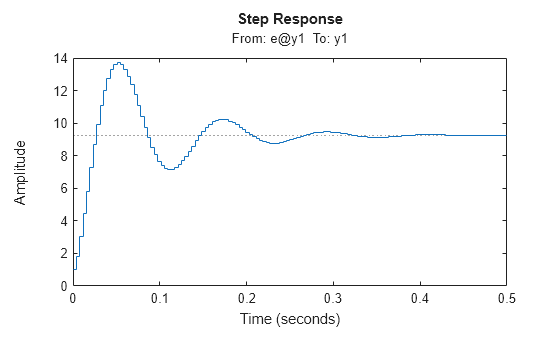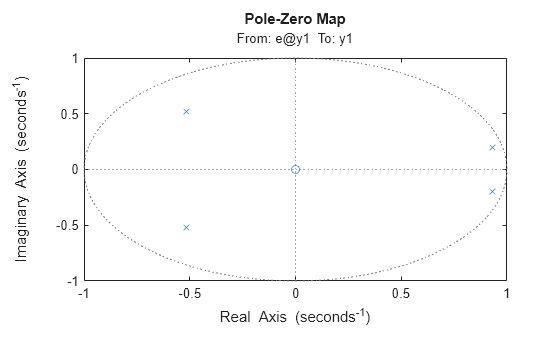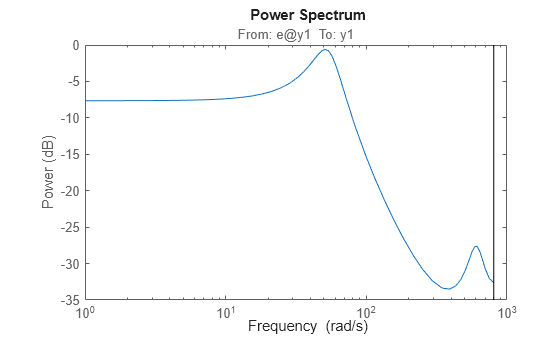分析时间序列模型
此示例显示如何分析时间序列模型。
时间序列模型没有输入。但是,您可以在这样的模型上使用许多响应计算命令。该软件(隐式地)将噪声源 e(t) 视为测量输入。因此,step(sys) 绘制阶跃响应,假设阶跃输入应用于噪声通道 e(t)。
为了避免软件处理时间序列模型时的歧义,您可以使用 noise2meas 将其明确转换为输入-输出模型。该命令将噪声输入 e(t) 视为测量输入,并将具有 Ny 输出的线性时间序列模型转换为具有 Ny 输出和 Ny 输入的输入输入-输出模型。您可以将生成的模型与命令(例如 bode、nyquist 和 iopzmap)一起使用,以研究 H 传递函数的特性。
估计时间序列模型。
load iddata9
sys = ar(z9,4);将时间序列模型转换为输入-输出模型。
iosys = noise2meas(sys);
绘制 H 的阶跃响应。
step(iosys);

绘制 H 的极点和零点。
iopzmap(iosys);

直接计算并绘制时间序列频谱,无需转换为输入-输出模型。
spectrum(sys);

该命令绘制时间序列谱幅度 。